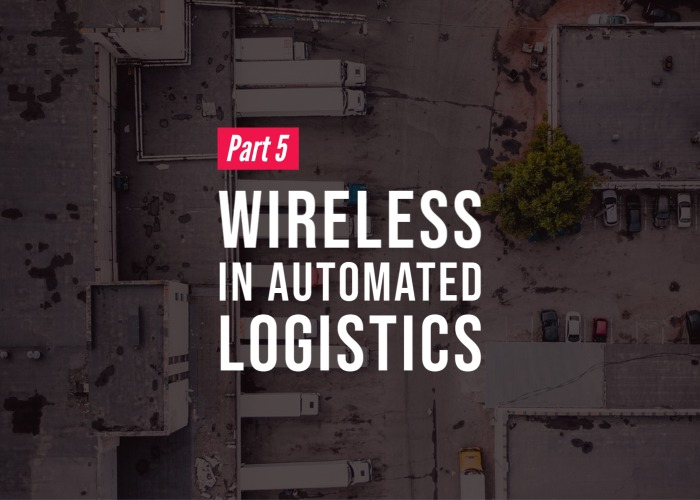Using Wireless in Automated Logistics Applications

Using Wireless in Automated Logistics Applications
Markets are increasingly competitive, and companies often look for ways to improve their position and bring more value to their customers. In product-driven businesses like those found in manufacturing, ecommerce, and even food and beverage, product quality, shipping speed, and cost are all focal points for the customer. As such, logistics automation for warehouses and distribution centers is becoming more critical to the core operations of businesses in these industries.
Automated logistics systems may be composed of several different types of carrier technologies for automated storage and retrieval systems (ASRS) or goods-to-person parts-picking. Cranes, AGVs, tuggers, and automated guided pallet trucks are the most common technologies used in these types of applications.
Three essential segments
When designing an automated logistics system, there are many considerations. The typical application is composed of 3 segments – the infrastructure, the carrier, and the operator station – and each segment is critical to a successful system.
The infrastructure is where the central control system is. Your PLC will be directly connected to all equipment throughout the application. This includes sensors for access gates and operator cells so the system knows where each carrier is, and where operators may be. In applications with moving robotics or carriers in proximity to people, safety is an important requirement. This means safety zones may need to be defined (such as where all AGVs stop moving if an operator enters their path of travel), and safety communication protocols like CIP Safety may have to take priority in the network. This creates the need for ultra-reliable wireless connectivity between the main controller and the carrier. To enable this, RLX2 master radios may be installed throughout the application to provide wireless coverage.
The carrier will be composed of all necessary electronics, including sensors for collision avoidance, location awareness, and safety, as well as drives for propulsion and a safety controller. This system requires a wireless communication connection to the infrastructure so control, safety, and diagnostic data may be transmitted. To establish this wireless link, an RLX2 wireless radio may be installed on each carrier. As the carrier moves through the application, it will roam from one master radio to another to maintain connectivity to the infrastructure. It is critical that this roam happen as fast as possible to maintain a reliable connection, and this is helped by the radios’ industry-leading fast roaming time of 10 milliseconds.
As the carrier maintains wireless communication to the infrastructure, it transfers goods from the storage location to the operator station. The operator station consists of several electronics, such as scanners and light sensors to verify the goods are as requested, and packaging materials and printers to pack the goods for shipping to the customer. The operator station maintains communication to the infrastructure via an Ethernet switch, allowing the operator to request product or goods for shipping.
Successful integration of each of these segments is critical for a safe and efficient automated logistics application. ProSoft is here to help with any communication challenges, from protocol integration of the various electronics, to wireless communications for an ultra-reliable wireless link between the carrier and the infrastructure.
Learn more about industrial wireless solutions.
This is Part 5 in a five-part series focused on how wireless connectivity is used in a variety of automated applications! Check out the first four blogs:
∙ Part 2: Wireless and Factory Automation Applications

